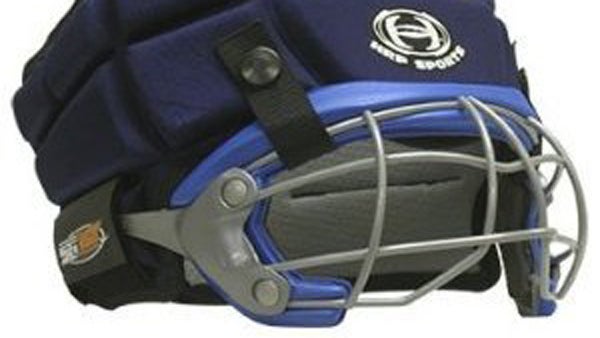Princeton schools mandating headgear for soccer, lacrosse, field hockey

The SG360 model will be mandated in Princeton schools for women's lacrosse and field hockey. The soccer headgear is less helmet-like. (Photo courtesy of HRP Products, Inc.)
Updated August 7, 2013:
Take a hard blow to the head diving for that soccer ball? Well, gone are the days of smelling salts and getting right back on the field.
A few years ago, New Jersey enacted a law mandating student athletes with a suspected concussion get medical clearance before being allowed to return to play.
Now, the Princeton school district has gone a step further, requiring headgear for all middle-school soccer, field hockey and lacrosse players, with plans to require it for high school athletes in the future.
While parents and coaches hope that will reduce the risk for concussions, some sports experts aren’t convinced it will help.
Tim Quinn, president of Princeton’s school board, said nothing can totally prevent a concussion from happening, “but if we can minimize the effect of any sort of head injury, I think that’s a good thing. I think what we’re doing here is looking out for the best interests of our athletes.”
Princeton’s school board unanimously approved the new headgear rule following a strong recommendation from the district’s athletic director. Quinn said that as far as he knows, Princeton is the only district in the state to have such a policy. The district will pay for the headgear, which can run anywhere from $35 to $70 in retail. Princeton athletics director, John Miranda, says the district still needs final clearance from the state’s athletic association.
Effectiveness of headgear questioned
But the evidence behind the headgear isn’t all there, according to Joanna Boyd, a concussion specialist at the Brain Injury Alliance of New Jersey.
Boyd, who “can’t say anything negative about a school district protecting their athletes in the very best way that they can,” added that there’s no proof headgear of any kind can prevent concussions. She said there’s yet to be any strong evidence one way or another as to whether this kind of headgear can minimize the effects of any hit to the head.
“The damage created by that is going to depend on so many other environmental factors,” Boyd said. “It’s the speed, it’s the angle, it’s the kind of hit it is.”
Others worry widespread use of headgear in sports such as soccer and lacrosse might have unintended consequences.
“I’m concerned that the players who are better padded will be more emboldened to do things they never would have thought to do before,” said Marc Block, a longtime soccer referee in South Jersey. “In much the same way that my sister referees women’s lacrosse, and as soon as they told everyone to start wearing those metal eye cages, the number of sticks to the head went up very quickly.”
After reviewing the research thoroughly, Quinn said the district is confident in its decision.
“If this helps one kid minimize an injury, then I think that it’s well worth it,” he said.
Quinn also thinks Princeton may be ahead of the game, so to speak, when it comes to preventing head injuries. As a longtime cyclist, Quinn can remember when people first resisted helmets in that sport.
“I’ve had my fair share of crashes and broken collar bones, and I’ve been hit by a car,” Quinn said. “And I’ve been grateful to have had that protection in place. So I think we’re doing the right thing here.”
Quinn said he has yet to hear any objections from students or parents. Anyone other than sixth-graders can also opt out of wearing the headgear, with parental permission, this first year.
WHYY is your source for fact-based, in-depth journalism and information. As a nonprofit organization, we rely on financial support from readers like you. Please give today.

